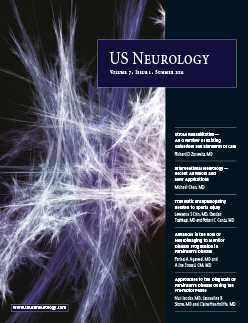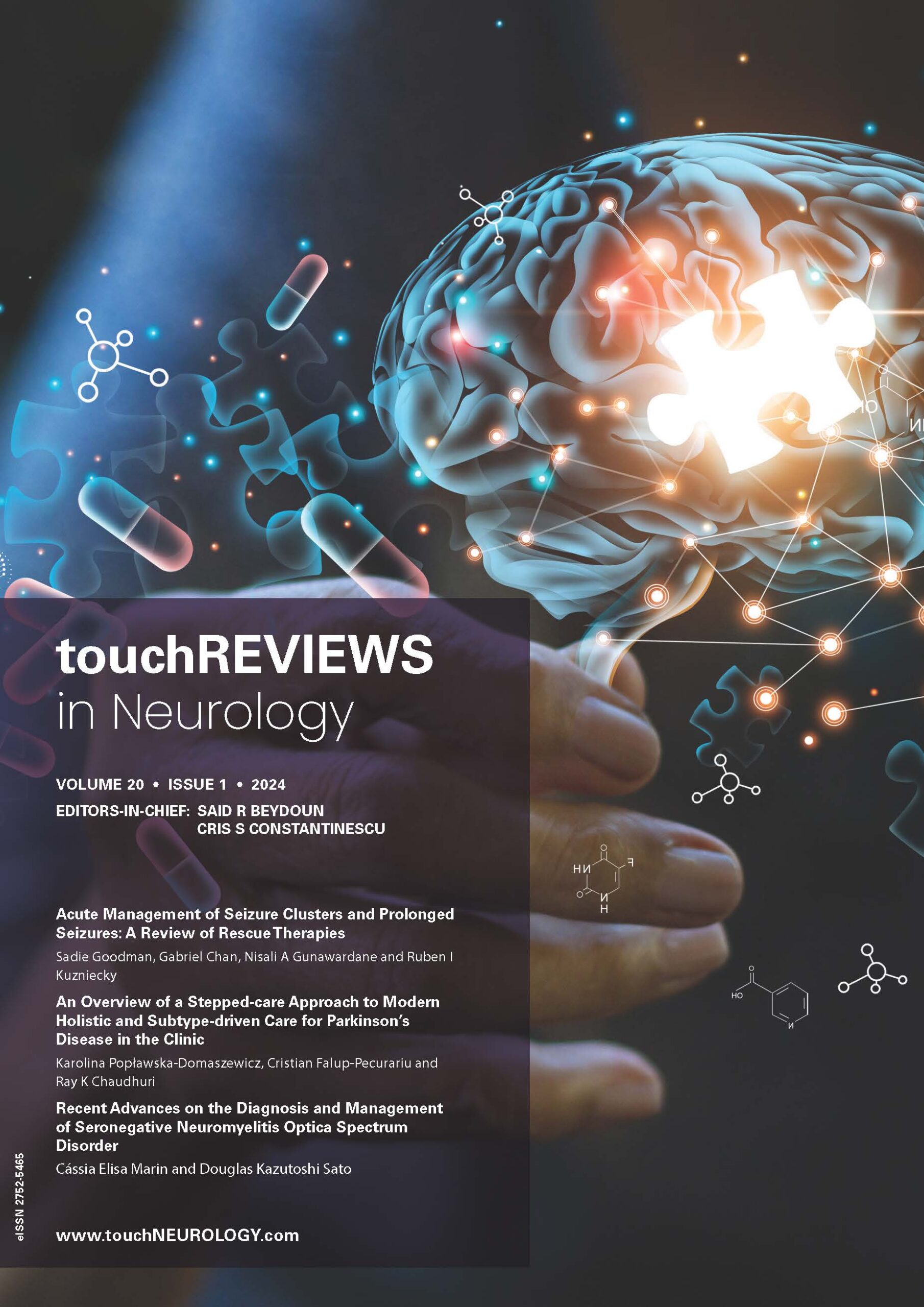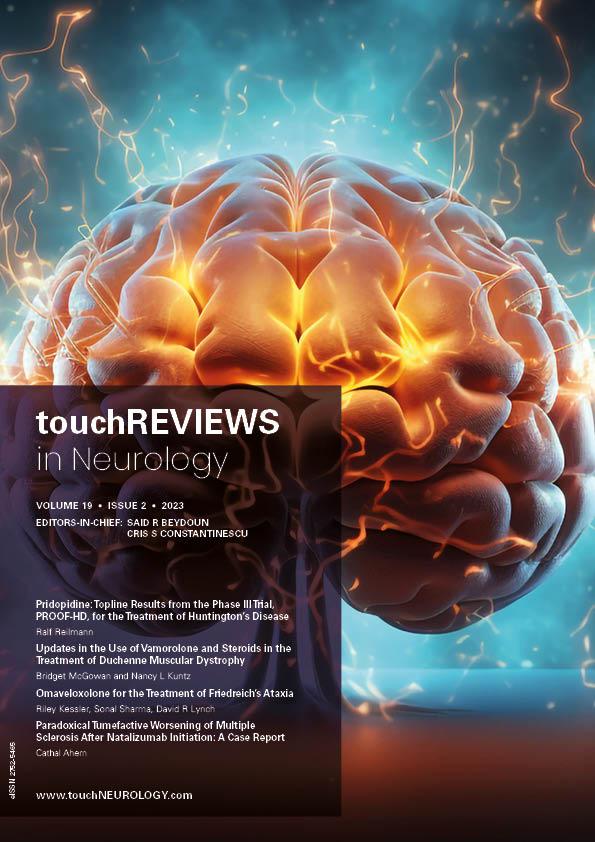US NEUROLOGY – VOLUME 7 ISSUE 1 – SPRING 2011
The edition opens with a very interesting article on the clinical and ethical issues we face when dealing with palliative care and dementia. The neurodegenerative section then continues with a subsection on PD, the second most common neurodegenerative disease. PD is a progressive degenerative disorder that has been the subject of much discussion recently. As […]
Neurodegenerative Disease
Since the prevalence of dementia is increasing as the population ages, estimates of the number of people with dementia are constantly being adjusted; the current estimate is that 7–8 million people in Europe have got dementia.1 In 2010, the number of people in the world affected by dementia is estimated to be 35.6 million.2 People […]
The prevalence of Parkinson’s disease (PD) is now estimated to be approximately 1 % in individuals over 60 years of age, with 4.1–4.6 million people affected worldwide,1 a number predicted to more than double by 2030.2 Clinical diagnosis is based upon the recognition of the motor features of tremor, rigidity, and bradykinesia, with other supporting […]
Parkinson’s disease (PD) is diagnosed on the basis of characteristic motor signs following clinical examination, and treatment has been overwhelmingly focused upon motor rather than non-motor symptoms until recently. Early and accurate detection of PD is considered desirable, with major research initiatives presently focused upon identifying and validating clinical batteries and biomarkers to this end. […]
Parkinson’s disease (PD) is the second most common neurodegenerative disorder and affects more than one in 100 people over the age of 65.1 The cardinal clinical features of PD are bradykinesia, resting tremor, rigidity and postural instability.2 The pathophysiological hallmark of PD is degeneration of the dopaminergic neurons of the substantia nigra leading to striatal […]
Brain Trauma
Sports-related injuries account for 10 % of head and spinal cord injuries,1 and yearly 1.5 million Americans suffer traumatic brain injury (TBI) without loss of consciousness or need for hospitalization. Further evidence that a growing public health dilemma is growing comes from the Centers for Disease Control and Prevention (CDC), who attributed 207,830 emergency room […]
Interventional neurology refers to endovascular, catheter-based techniques using fluoroscopy and angiography to diagnose and treat vascular disease of the central nervous system. These techniques were originally pioneered by a neurologist,1 then the field was exclusively comprised of neuroradiologists. Recently, neurosurgeons and neurologists are increasingly seen as the majority. Not only are members of all three […]
In the US, the incidence rate of new or recurrent stroke is approximately 795,000 per year, and stroke prevalence for individuals over the age of 20 years is estimated at seven million.1 Mortality rates in the first 30 days post-stroke have decreased owing to advances in emergency medicine and acute stroke care. There is also […]
Multiple Sclerosis
Multiple sclerosis (MS) is a chronic illness of the central nervous system affecting approximately 2.5 million young people worldwide.1 Regarded as exclusively a white matter (WM) disease, clinicians are now facing the notion, known to pathologists for over a century, that MS may affect the gray matter (GM) as well.2 Currently, MS is an incurable […]
Autonomic Nervous System Disorders
Disorders of the autonomic nervous system (ANS) can be of central or peripheral origin, and may be primary illnesses (e.g. primary autonomic failure, multiple system atrophy) or develop secondary to other diseases (e.g. Parkinson’s disease, diabetes, stroke, Guillain Barré syndrome). The anatomical and functional organization of the ANS is quite complex, involving structures within the […]
Epilepsy
Throughout the ages, sleep has been considered akin to death; indeed, Homer referred to sleep as the ‘brother of death’. However, the advent of electroecephalography (EEG) has expelled this misconception and sleep is now recognized as consisting of active brain states during which many biologic processes occur, such as synaptic plasticity and memory consolidation.1 Sleep […]
Surgery and Imaging
Surgery for tumors near the sensorimotor cortex poses risks to both sensory and motor pathways. While the sensory pathways may be monitored successfully with somatosensory evoked potentials (SEP), the motor pathways pose different challenges. Transcranial motor evoked potentials (tcMEP) are now routinely used for monitoring motor pathways in the spinal cord.1 However, tcMEP use is […]
What Is Constructive Interference in Steady State Imaging?

Trending Topic
Welcome to the latest edition of European Neurological Review, which features a wide range of articles of interest to neurologists and other practitioners involved in the care of patients with neurological illness. As we move into a new decade, the field of neurology continues to face fresh challenges. Despite an increased understanding of the pathophysiological […]
Journal Archive
touchREVIEWS in Neurology is a peer-reviewed, free-to-access, bi-annual neurology journal comprising review articles, case reports, practice guides, theoretical discussions, and original research. It features balanced and comprehensive articles written by leading authorities, addressing the most important and salient developments in the field of neurology.
Latest articles videos and clinical updates - straight to your inbox
Log into your Touch Account
Earn and track your CME credits on the go, save articles for later, and follow the latest congress coverage.
Register now for FREE Access
Register for free to hear about the latest expert-led education, peer-reviewed articles, conference highlights, and innovative CME activities.
Sign up with an Email
Or use a Social Account.
This Functionality is for
Members Only
Explore the latest in medical education and stay current in your field. Create a free account to track your learning.






